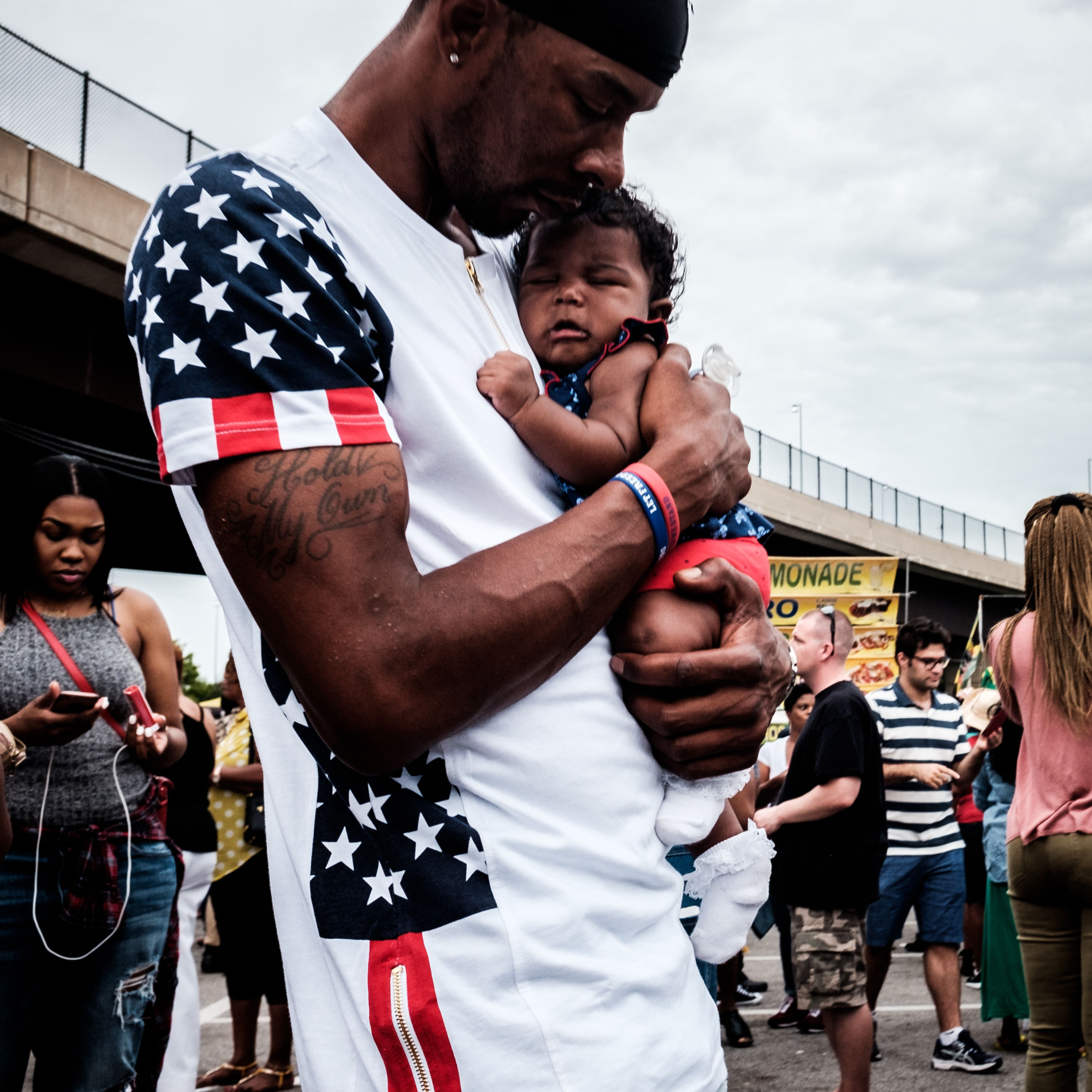February 28, 2022
Portraits of Black life paint a picture of American history. There are the iconic photos we remember of the civil rights movement: Rosa Parks on a bus, Ruby Bridges being escorted by U.S. marshals from her elementary school in New Orleans, Martin Luther King Jr. giving his “I Have A Dream” speech. There are the protest images of Tommie Smith and John Carlos holding up Black Power fists at the 1968 Olympics, of demonstrators holding “I Am A Man” signs in Memphis, of a man running ahead of a pack of police officers in Baltimore.
But just as important as the big history-making moments are the small moments of everyday life captured by Black photographers. The Gordon Parks image of a woman and child outside a department store in Mobile, Alabama. Florestine Perrault Collins’ portraits of family friends in New Orleans. The James Van Der Zee portraits of Black New Yorkers.
In that spirit, photographers Michael A. McCoy, Ruddy Roye, Vanessa Charlot, Kay Hickman and Kenneth McFarlane Jr. have spent Black History Month sharing images of Black people living their everyday lives who might otherwise have gone unseen. A grandmother in Miami’s gentrifying Liberty City neighborhood. A man waving an American flag in Times Square on Election Day. An urban farmer in Philadelphia.
“The role of the Black photographer has been to disrupt the photographic landscape by sharing photographs of Black people free of the white gaze,” Charlot, who is based in Miami, told HuffPost. “In doing so, Black photographers are able to restore the dignity of people who are often presented in the public space divorced from context, motives and histories.”
This photo essay offers an intimate look at Black life through the eyes of Black photographers — and speaks to why Black photographers are integral to recording history.
Ruddy Roye
“The role of a Black photographer in this time is to live, produce and survive. There cannot be just one role or a singular responsibility. Over the years, Blackness as a culture has been the favorite ingredient to fuse into everything. Whether it is breaking news, sports, music, food or fashion, Blackness has been exported and transported to every living room through vehicles that sometimes do not fully know or even understand the story that was unfolding before their eyes. I believe it is incumbent on the Black photographer to understand this lived experience, then find a way to survive the trauma that comes with doing the work. There is no dealing in Blackness without contracting the trauma that comes with it. There is no antidote, either — well, not yet.”
Vanessa Charlot
“My work encourages audiences to think deeply about the stories and notions they hold to be true when they see Black bodies as static images. As a driving principle, my mission is to create work that stimulates widespread and far-reaching conversations that are both enlightening and uncomfortable, helping us all to reimagine our worlds where all people experience equal justice, increasing prosperity and equity.”
Michael A. McCoy
“Black photographers have a personal responsibility to document and record American history as it relates to Black people. It’s an obligation. If we don’t document our history, then who will? We need people to carry on the legacies of photographers Gordon Parks and Roy DeCarava, who beautifully captured everyday lives of Black people in America. For me, it’s a privilege to be able to represent the culture and have the trust of Black subjects who allow me into their lives and their spaces to accurately tell their stories with honor and dignity.”
Kay Hickman
“We all use our experiences to shape what we see. Every photographer records how they see the world around them. It is important to be aware of varying views to formulate a more realistic reality. It is my goal to highlight the diversity and the genius in our everyday existence. I document, in hopes that the next generation, and even this generation, of Black people will find inspiration to be audacious and to be their authentic self, because Black culture is truly rich and enriching.”
Kenneth McFarlane Jr.
“From the very beginning of this medium, Black photographers have sought to take ownership of our image and narrative because our stories will always be more authentic and our images most accurate when we make them. I stand on the shoulders of these photographic ancestors and am acutely aware that I am a part of a photographic continuum that is far greater than anything I could create as an individual. It is an honor to add my work to the collective memory of my community.”
Photo & Art Director: Christy Havranek Art Director: Isabella Carapella Senior Photo Editor: Damon Dahlen Copy Editor: Alexander Eichler Audience: Cambria Roth & Abby Williams

